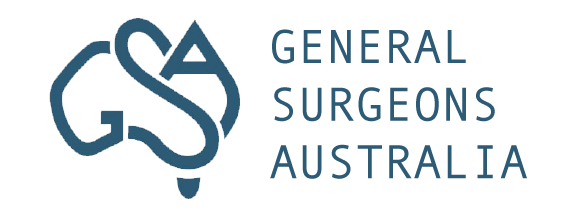Accessory Breast Tissue
What is Accessory Breast Tissue?
Accessory breast tissue, also known as polymastia, refers to the presence of extra breast tissue that exists outside of the normal breast area. It is a congenital condition, meaning it is present at birth, although it may not become noticeable until puberty, pregnancy, or during periods of hormonal changes when breast tissue tends to grow. This extra tissue can appear anywhere along the "milk line" or mammary ridge, which extends from the armpit down to the groyne, but it is most commonly found near the armpits or below the normal breasts.
How Does Accessory Breast Tissue Impact Your Anatomy and Health?
In many cases, polymastia is simply a cosmetic issue, presenting as small lumps or nodules that may or may not be visible to the naked eye. However, because this tissue is functionally similar to normal breast tissue, it can be subject to the same hormonal influences and health issues:
- Hormonal Changes: Accessory breast tissue can swell or become tender during menstrual cycles, pregnancy, or breastfeeding, mirroring the changes seen in normal breast tissue.
- Breast Conditions: Conditions such as fibrocystic changes, benign tumours (like fibroadenomas), and even breast cancer can develop in accessory breast tissue.
- Psychological Impact: The appearance of accessory breast tissue can lead to self-esteem issues or discomfort, especially if the tissue is visible or significantly alters the body's contour.
- Physical Discomfort: In some cases, especially when the tissue enlarges during hormonal changes, it can cause physical discomfort or pain.
Causes and Risk Factors for Accessory Breast Tissue
Accessory breast tissue is a relatively common congenital anomaly affecting both men and women. The exact causes of this condition are not fully understood, but it is believed to be related to the embryological development of the mammary glands. Risk factors may include:
- Genetic Predisposition: There may be a genetic component, as accessory breast tissue sometimes runs in families.
- Sex: Women are more likely to notice or report accessory breast tissue, particularly because of the changes associated with menstrual cycles, pregnancy, or lactation.
- Ethnic Background: Some studies suggest that certain ethnic groups may have a higher incidence of accessory breast tissue, though more research is needed to confirm these findings.
Symptoms of Accessory Breast Tissue
Accessory breast tissue often does not cause any symptoms and may go unnoticed unless it enlarges or becomes symptomatic due to hormonal influences or other conditions. When symptoms do occur, they can include:
- Visibility of Extra Masses: The most common symptom is the presence of visible or palpable lumps along the milk line, typically in the armpits or below the natural breasts.
- Pain or Discomfort: Like normal breast tissue, accessory breast tissue can swell and become painful or tender in response to hormonal changes associated with menstrual cycles, pregnancy, or menopause.
- Skin Changes: Skin overlying the accessory breast tissue may exhibit changes such as dimpling, redness, or other signs suggestive of underlying conditions.
- Lactation: Accessory breast tissue can sometimes produce milk during breastfeeding, leading to unexpected lactation outside the normal breast area.
Types of Accessory Breast Tissue
Accessory breast tissue can vary significantly in its form and location, leading to its classification into different types:
- Accessory Nipple (Polythelia): This is the presence of extra nipples, which may occur with or without associated glandular tissue. They are often smaller and less well-formed than the primary nipples.
- Accessory Breast (Polymastia): This refers to the presence of additional breast glands and is what people usually refer to when discussing accessory breast tissue. These can range from small amounts of extra tissue to fully developed extra breasts.
- Ectopic Breast Tissue: This type of accessory tissue is found in abnormal locations, such as the face, thigh, or back. It is rare and can sometimes be mistaken for other types of growth until further investigation is done.
Diagnosis of Accessory Breast Tissue
- Physical Examination: During a routine examination, a doctor may feel or see the extra tissue, or the patient may notice it themselves.
- Ultrasound: This is often the first imaging test used to evaluate the nature of the tissue, particularly if it changes or becomes symptomatic.
- Mammography: A mammogram may assess extra tissue that has developed enough to resemble normal breast tissue.
- MRI: This may be utilised for a more detailed evaluation, especially if there is a concern about possible malignancies within the accessory breast tissue.
Treatment of Accessory Breast Tissue
- Observation: If the tissue is asymptomatic, no treatment may be necessary, and observation is often recommended.
- Surgical Removal: Surgical removal is a common treatment for symptomatic or cosmetically undesirable accessory breast tissue. This procedure typically involves excision of the excess tissue.
- Management of Symptoms: Medications or other conservative treatments can sometimes provide symptomatic relief for pain or discomfort caused by hormonal fluctuations.
What if Accessory Breast Tissue is Untreated?
If the tissue does not cause discomfort or cosmetic concern, it may not need any treatment. Like normal breast tissue, accessory breast tissue can develop benign or malignant conditions, including cysts, fibroadenomas, or even cancer. Regular monitoring is important.
For some individuals, visible or bothersome accessory breast tissue can affect body image and emotional well-being, necessitating treatment. The decision to treat accessory breast tissue depends on various factors, including the individual’s symptoms, the location and size of the tissue, and personal preferences regarding cosmetic appearance and physical comfort.









